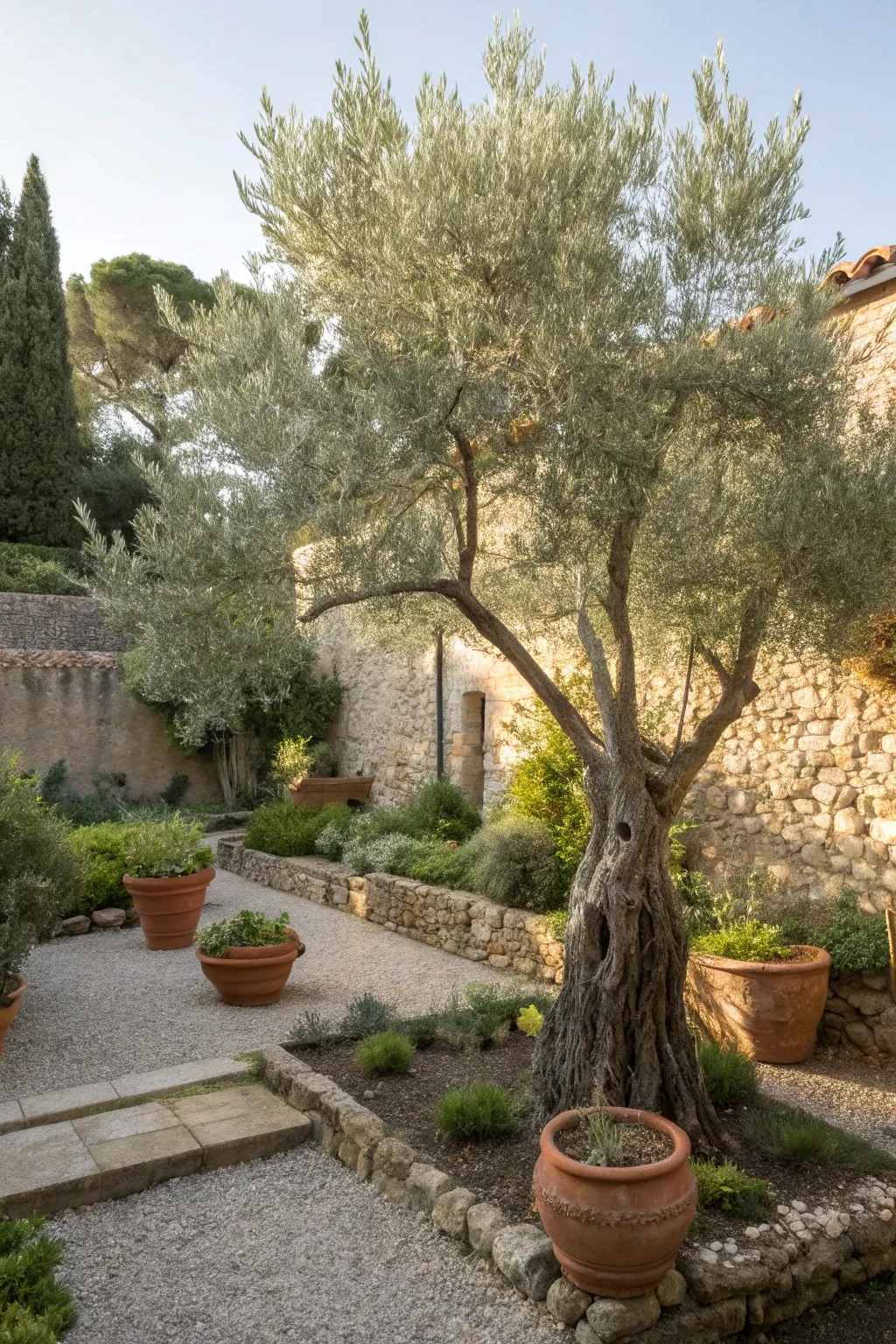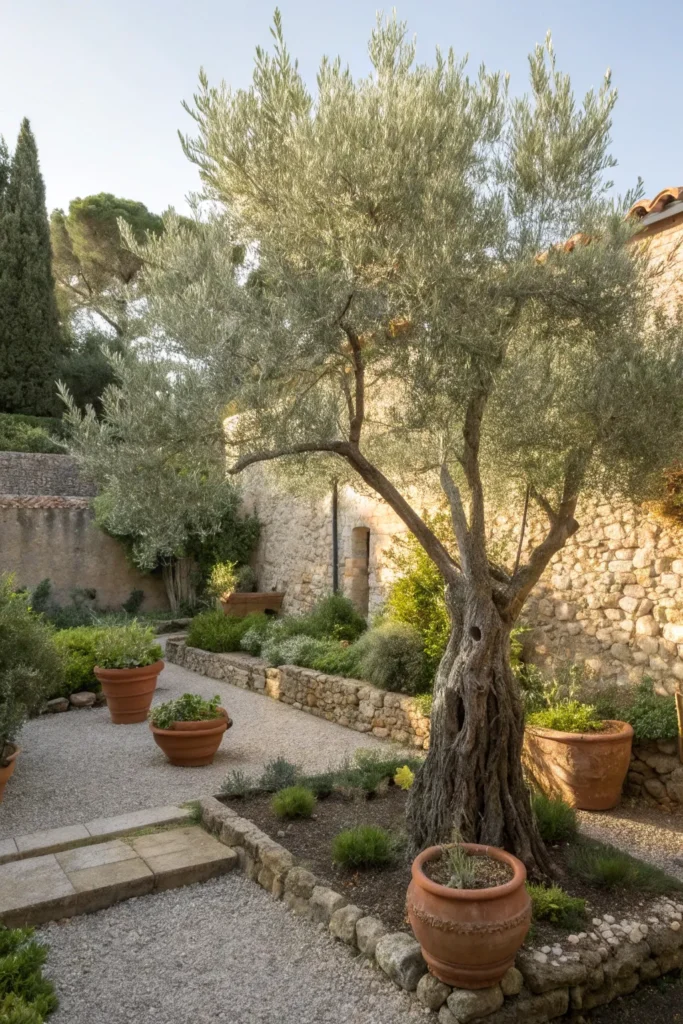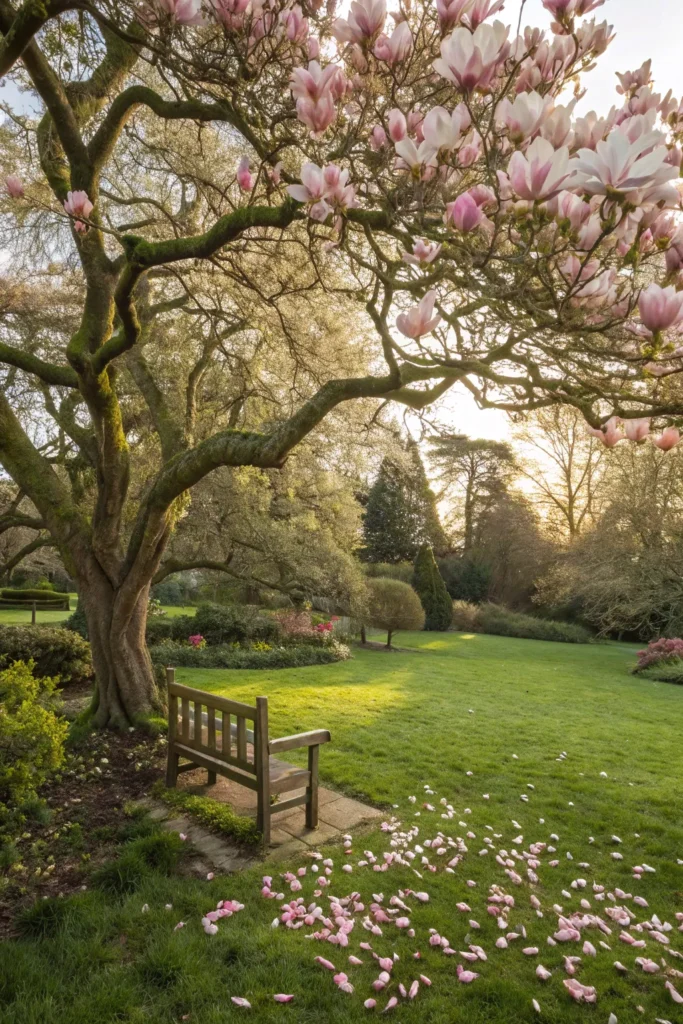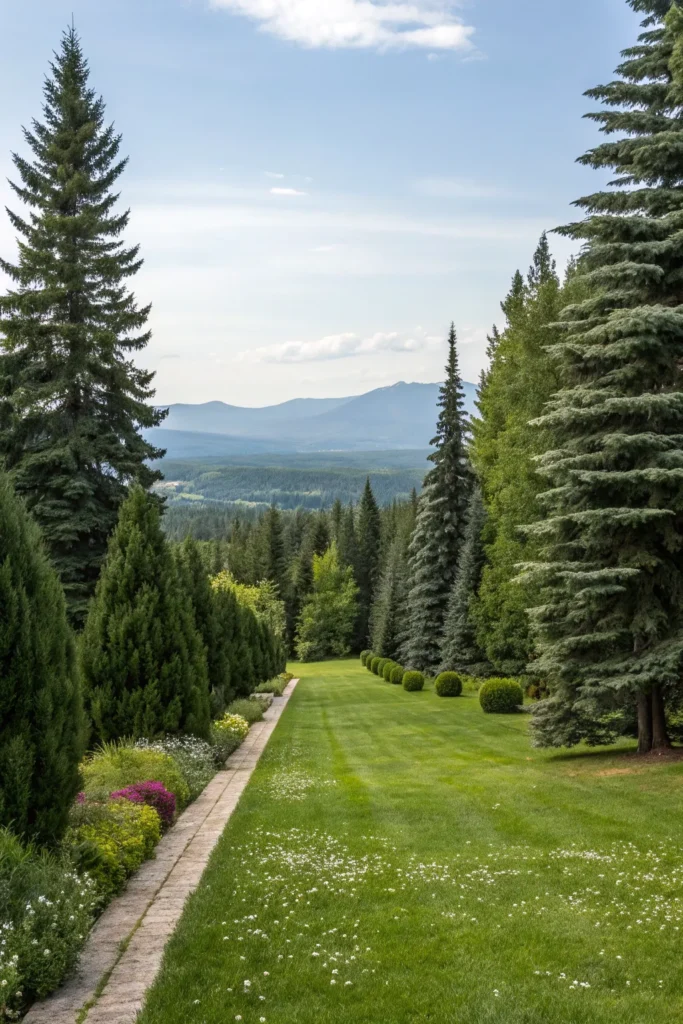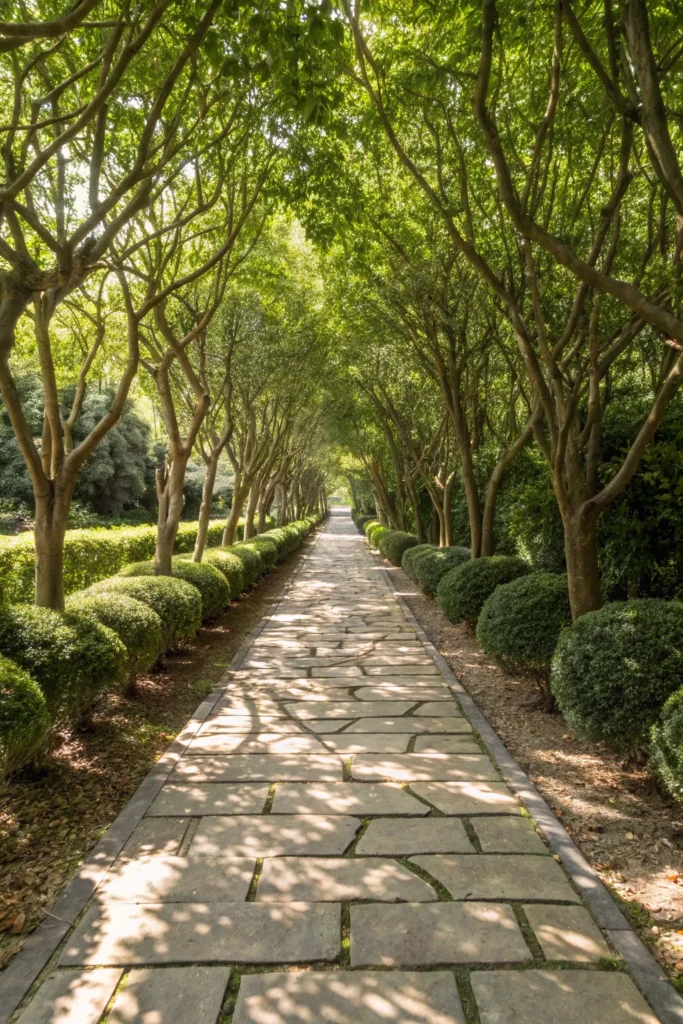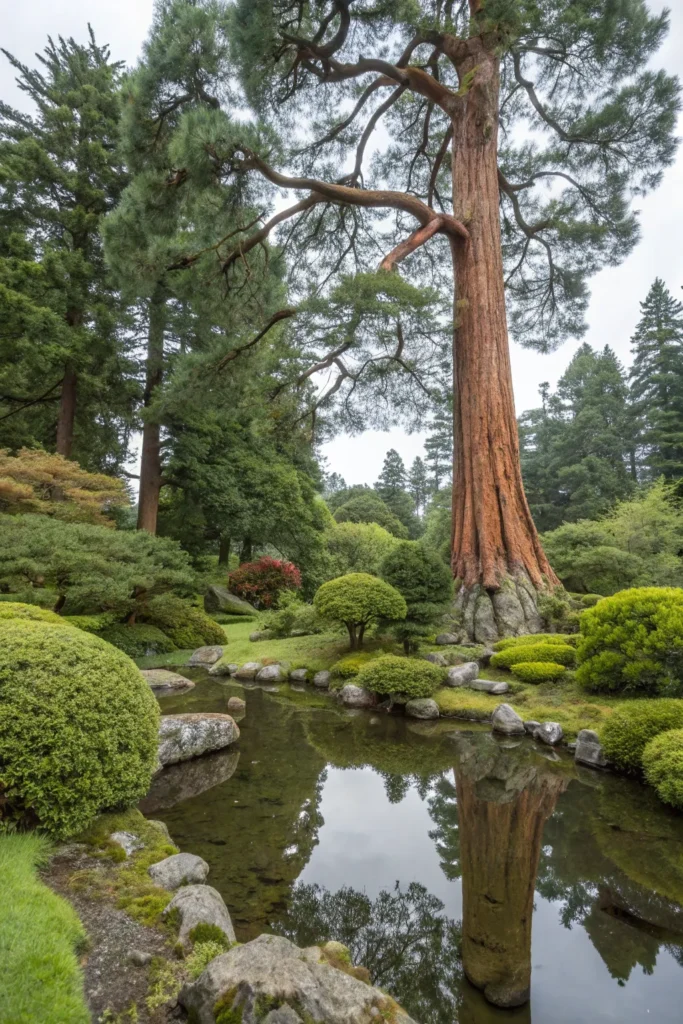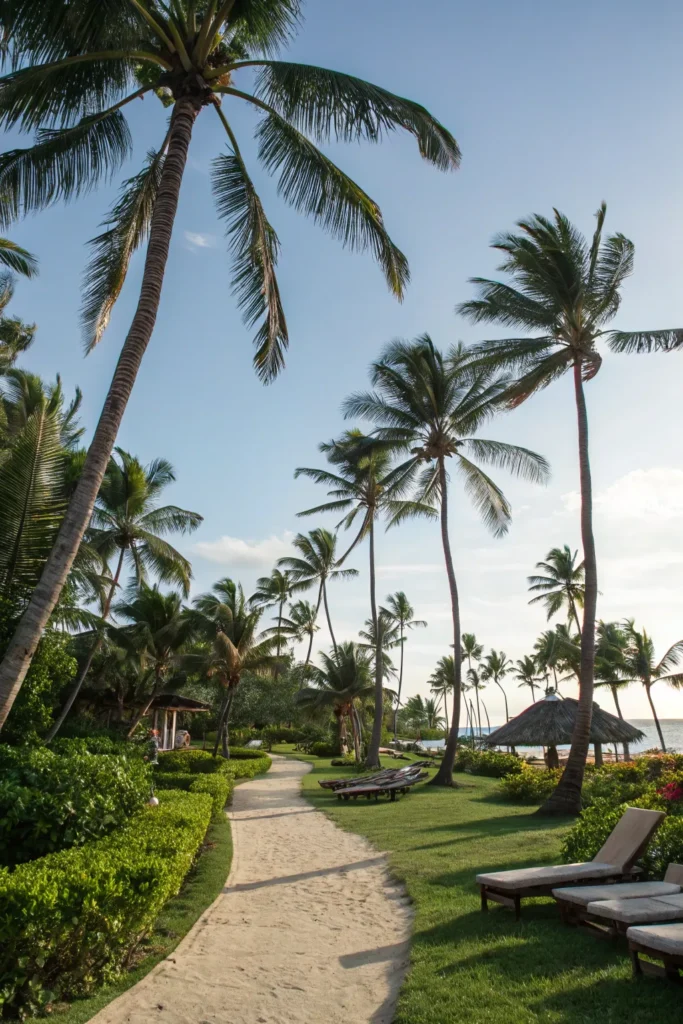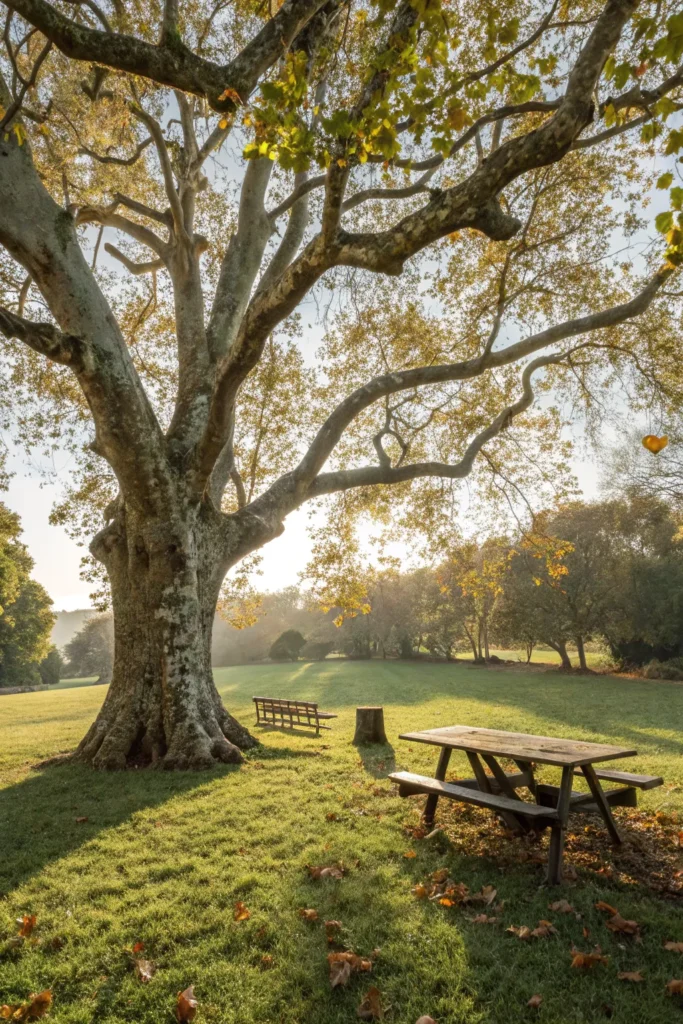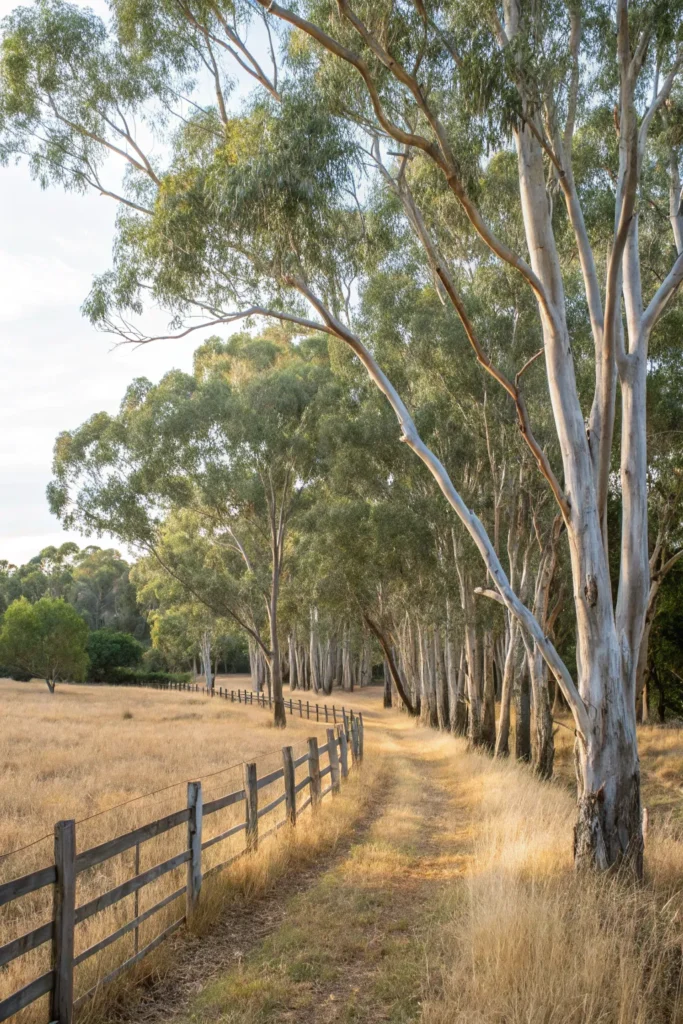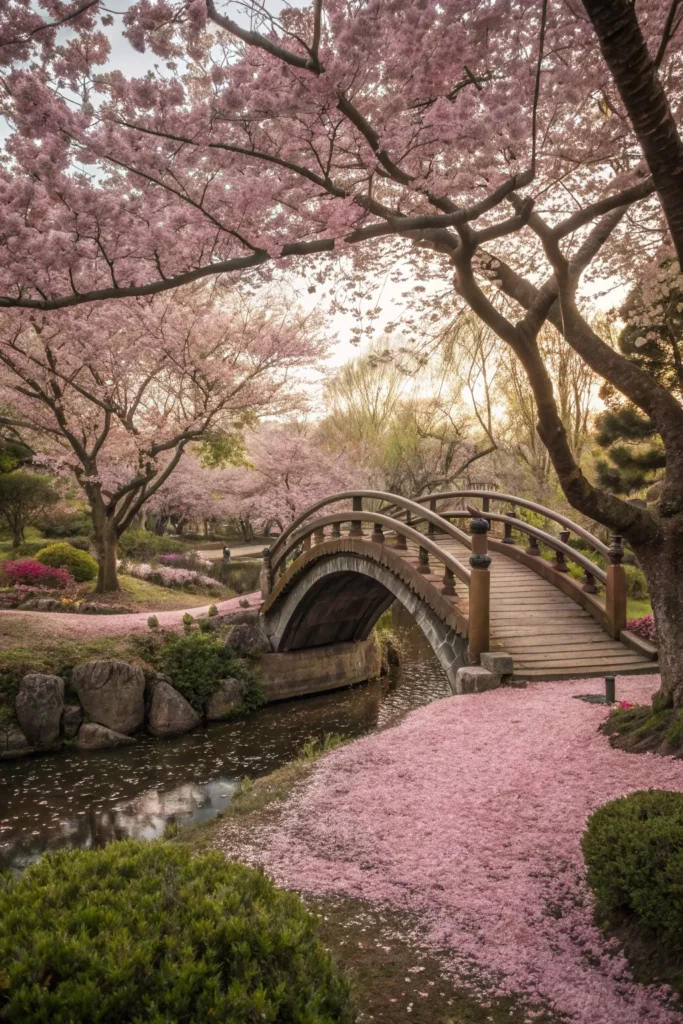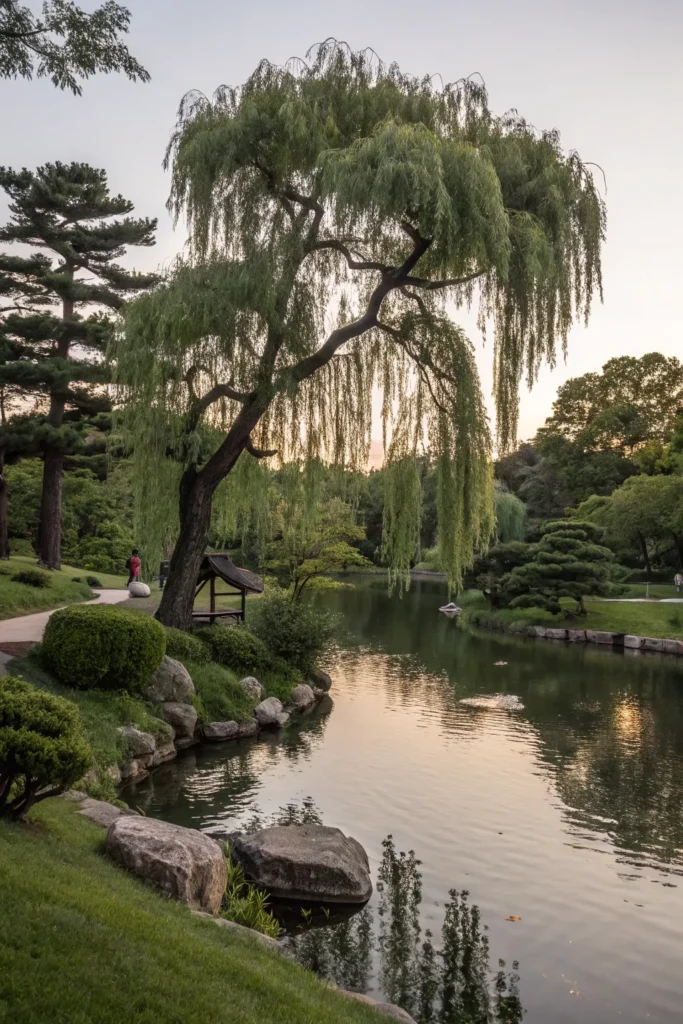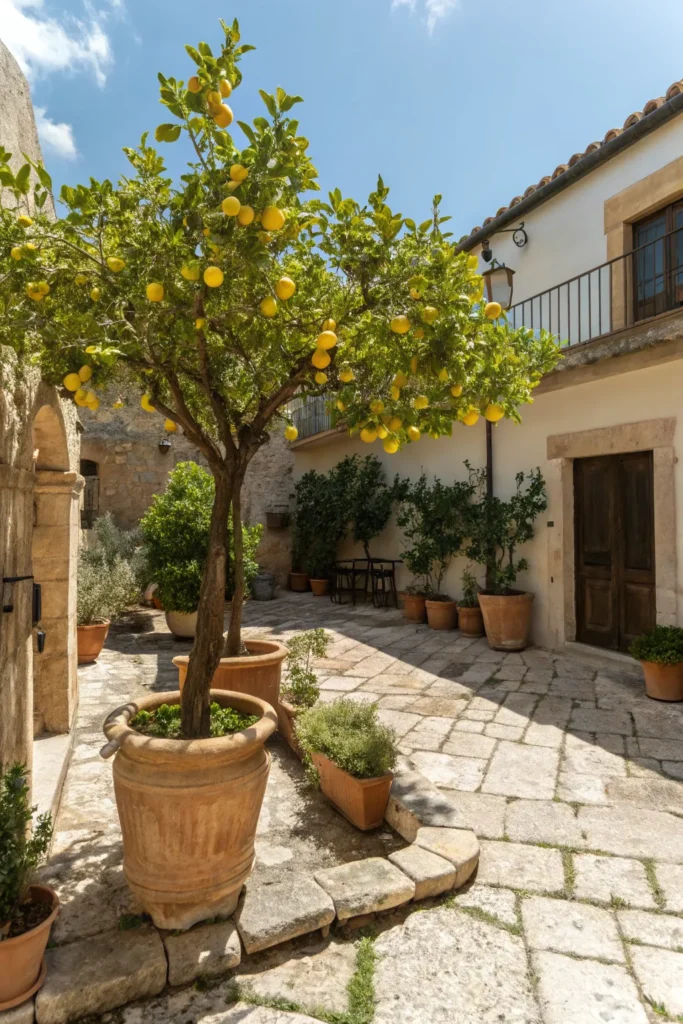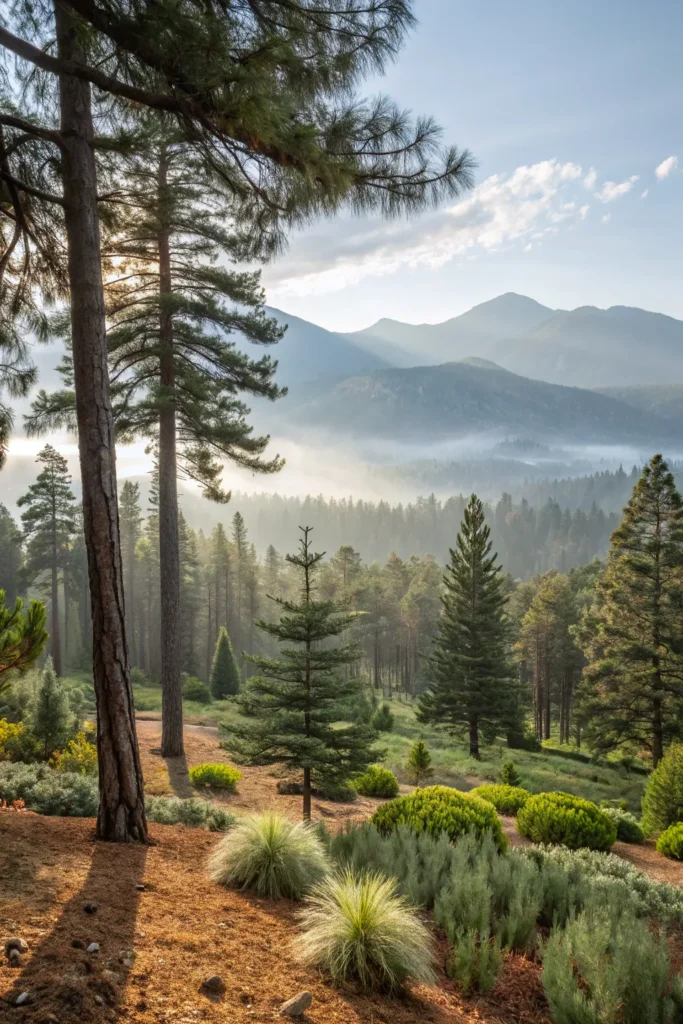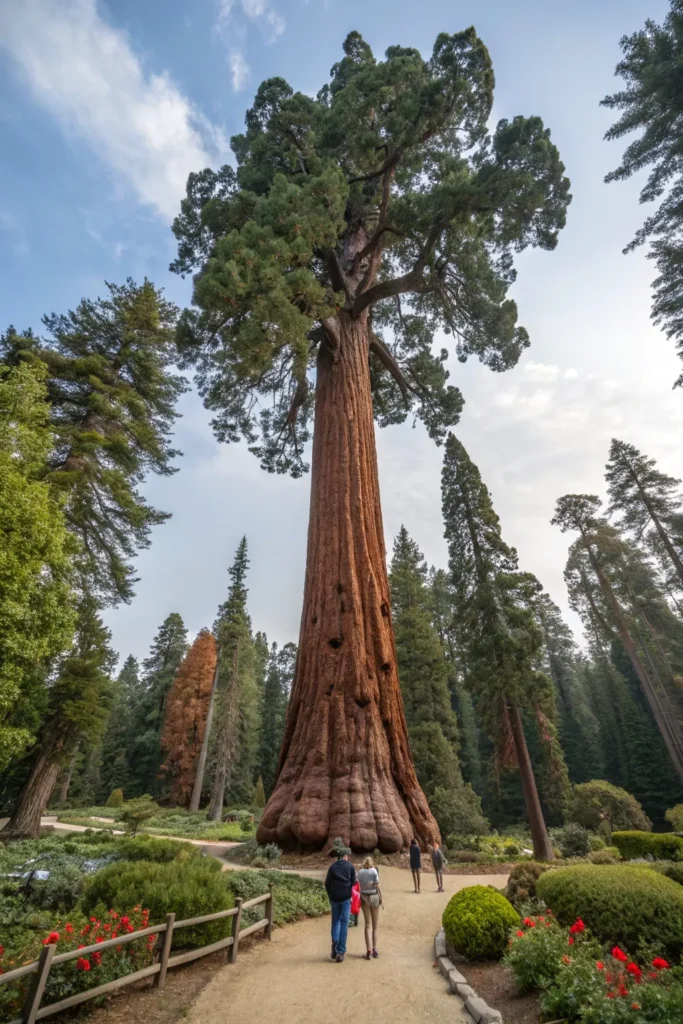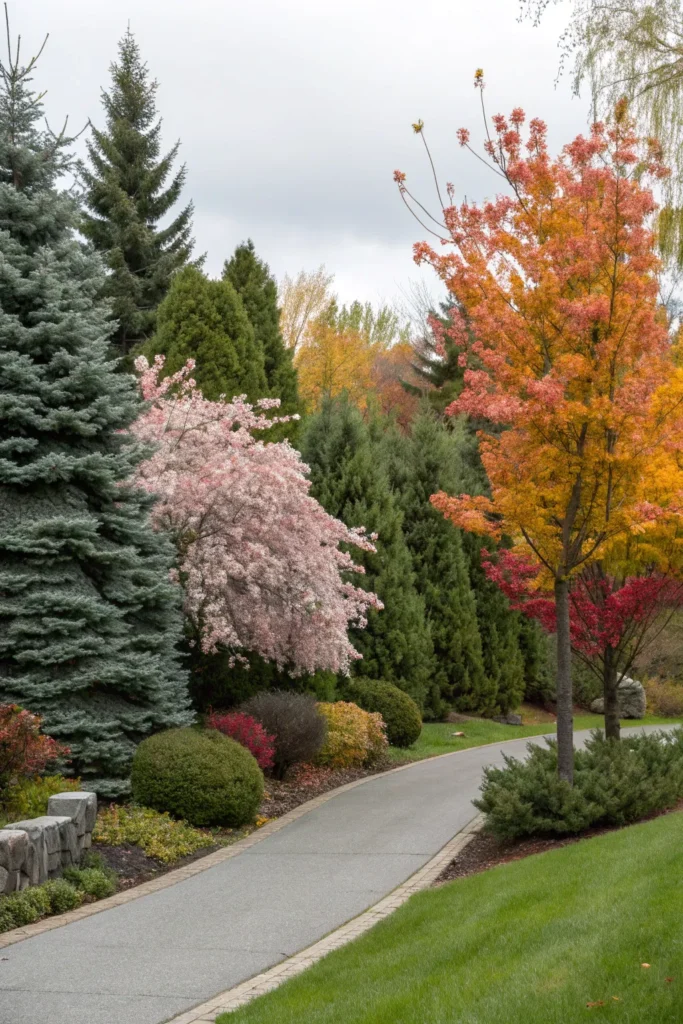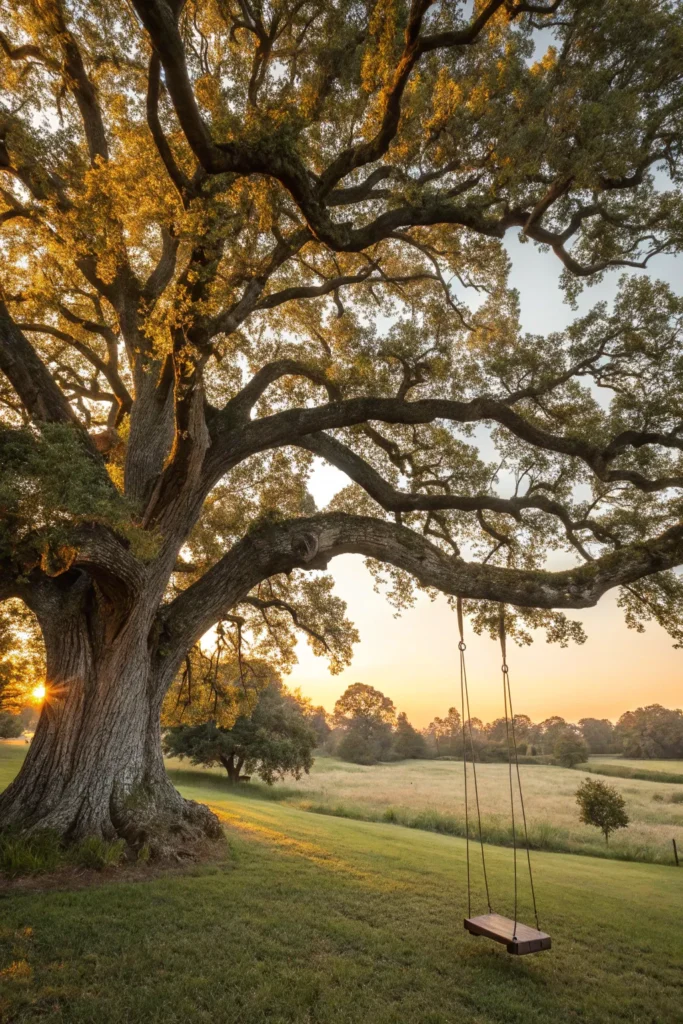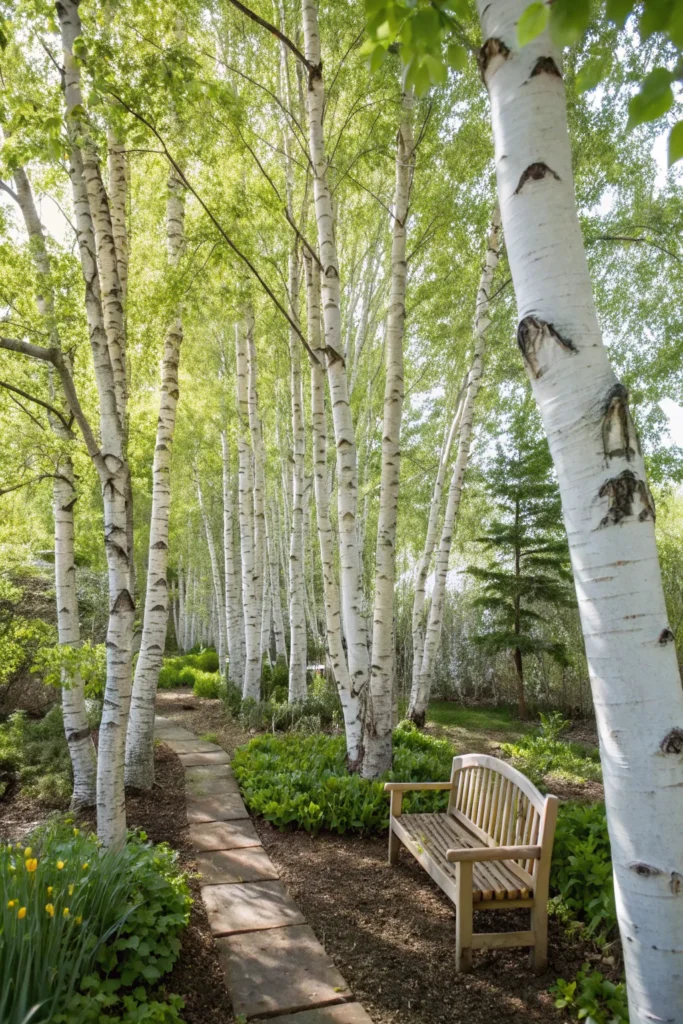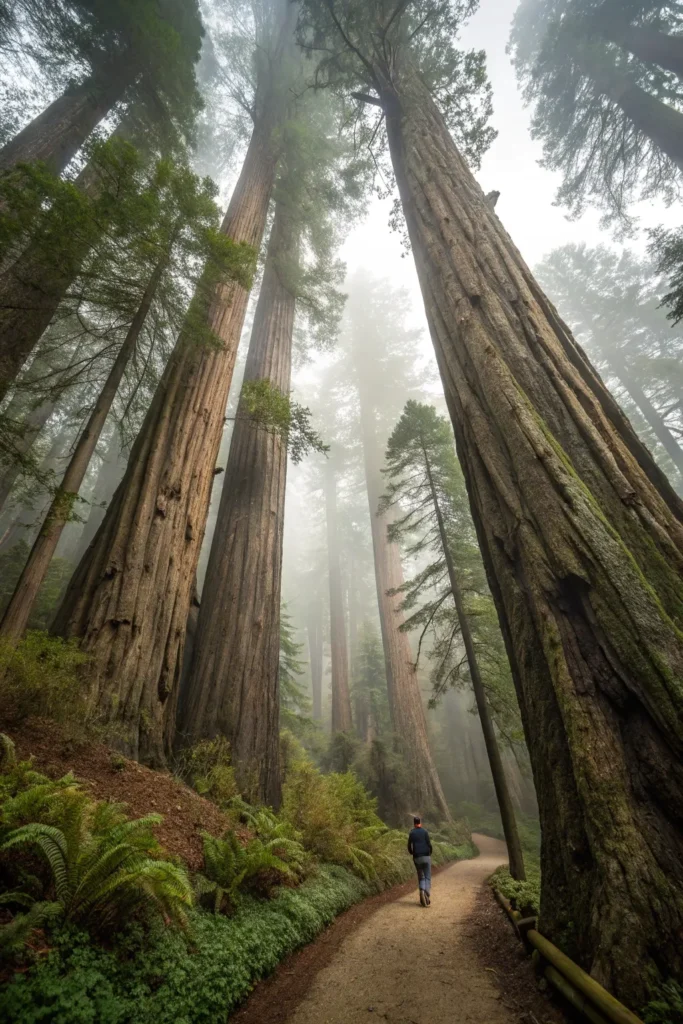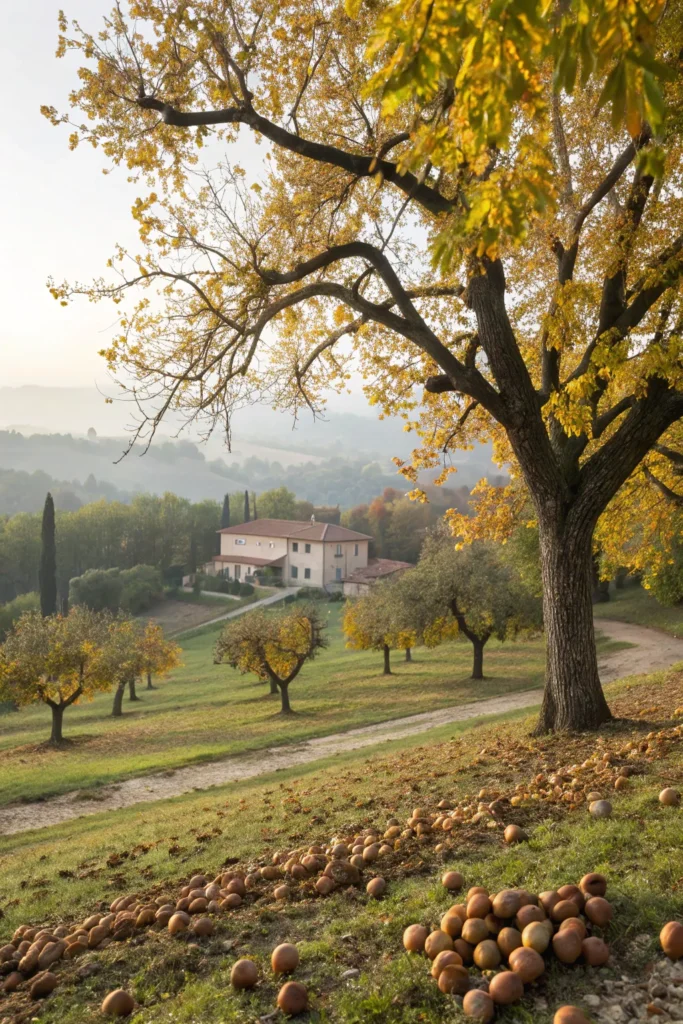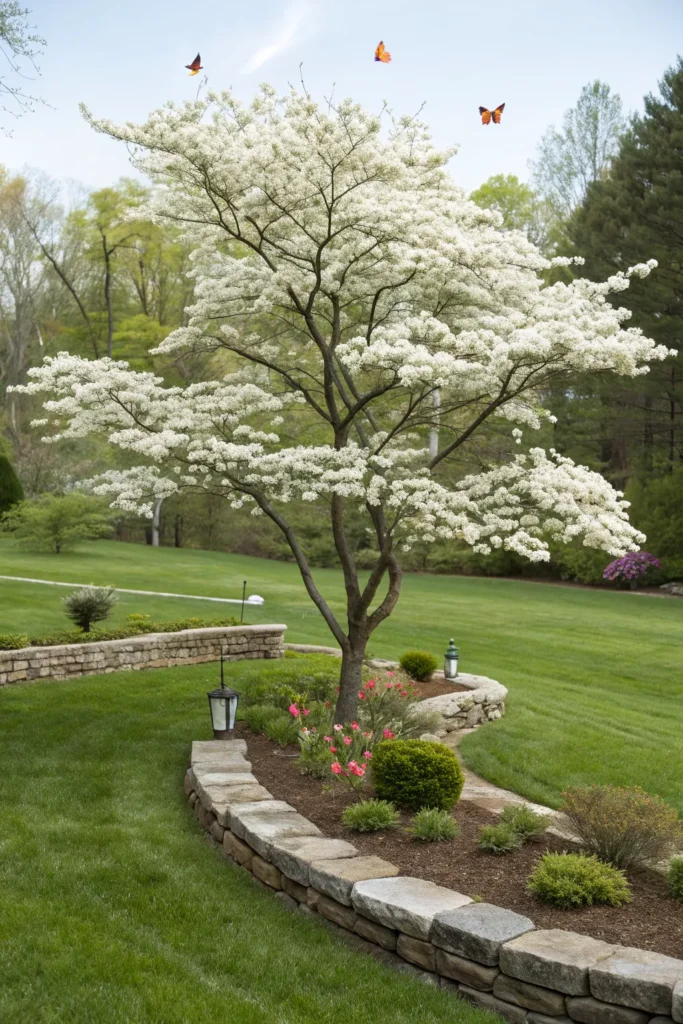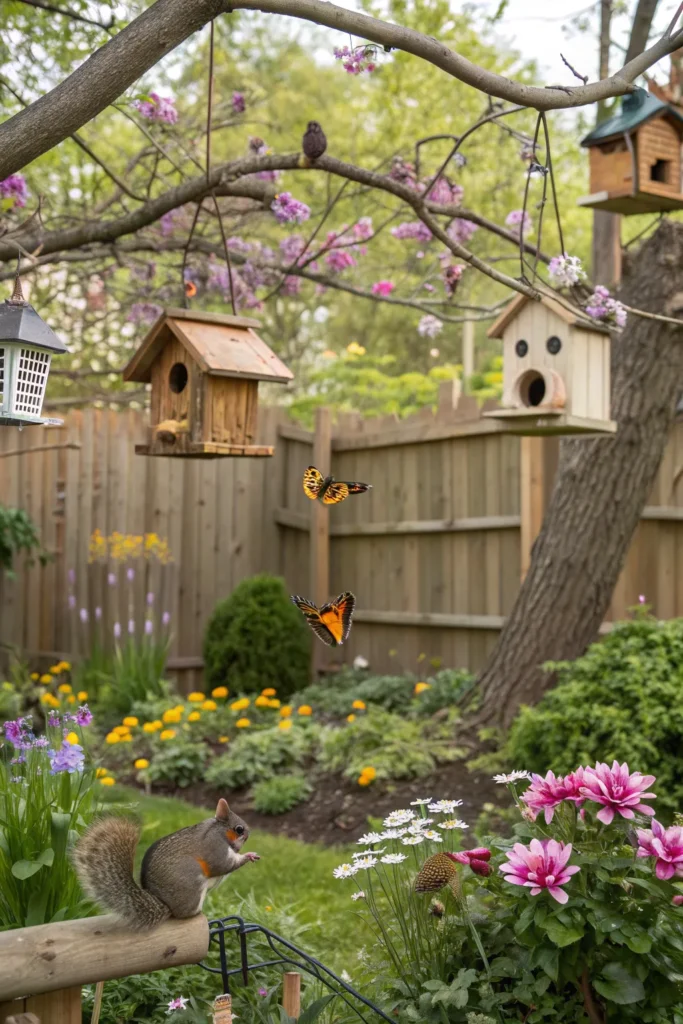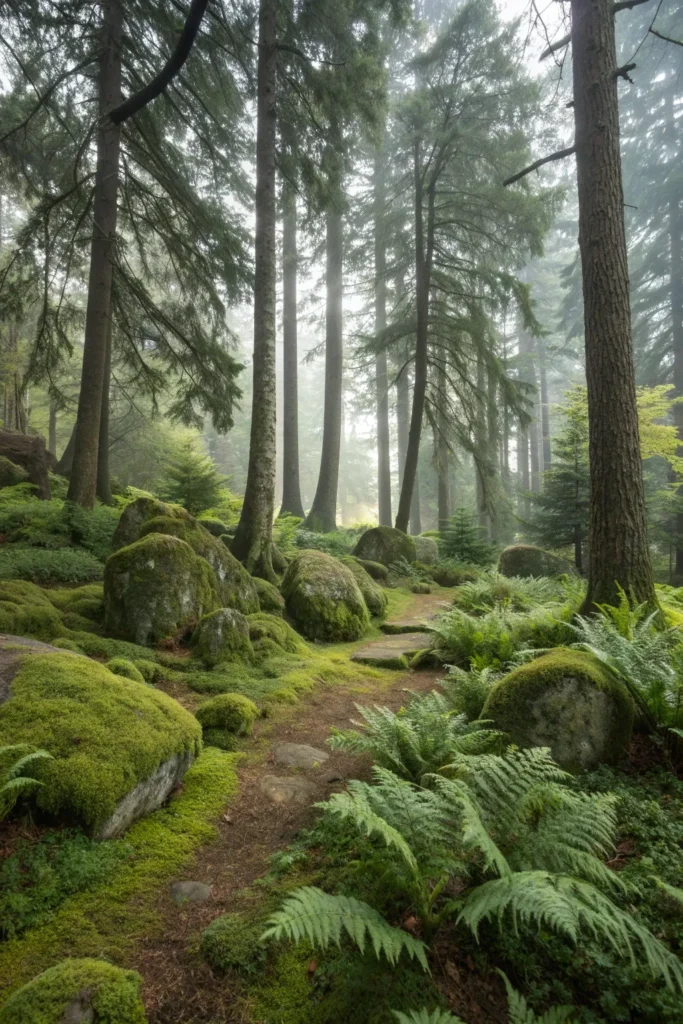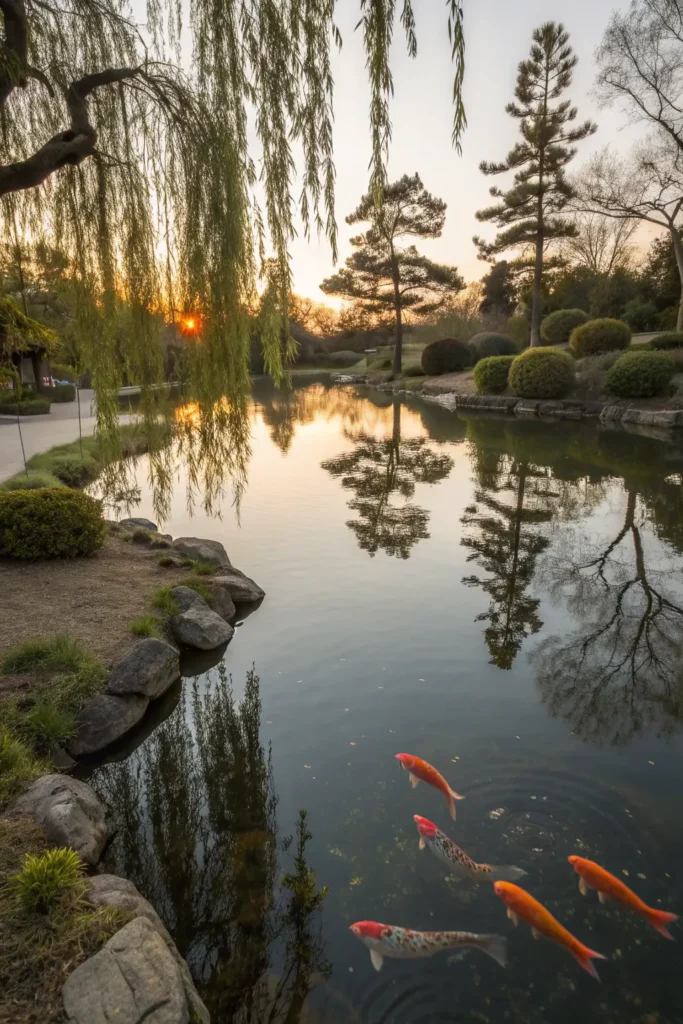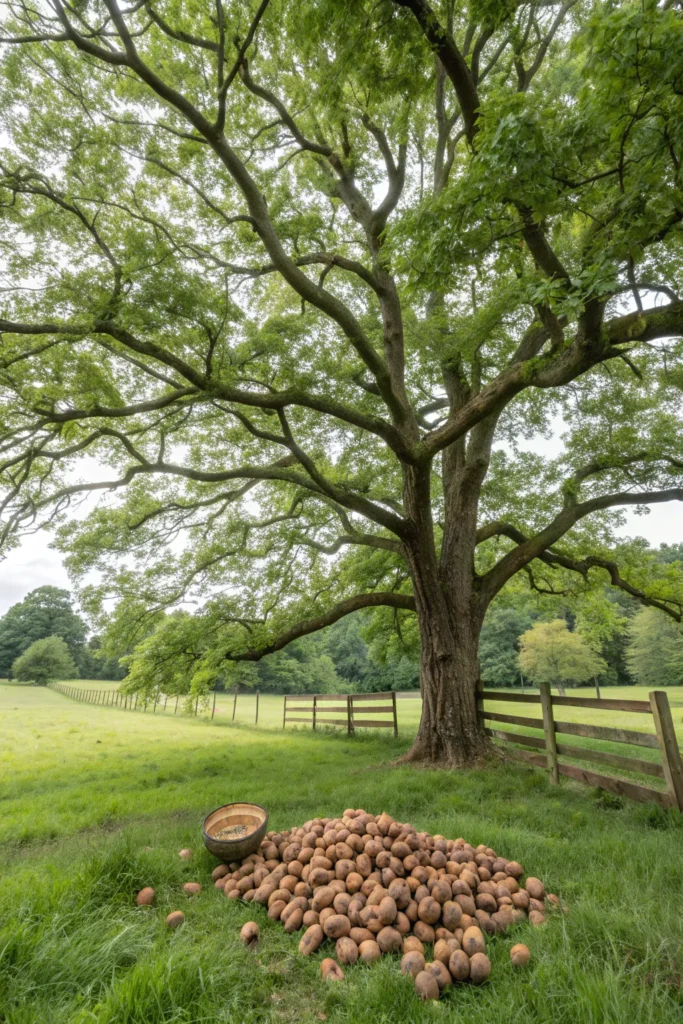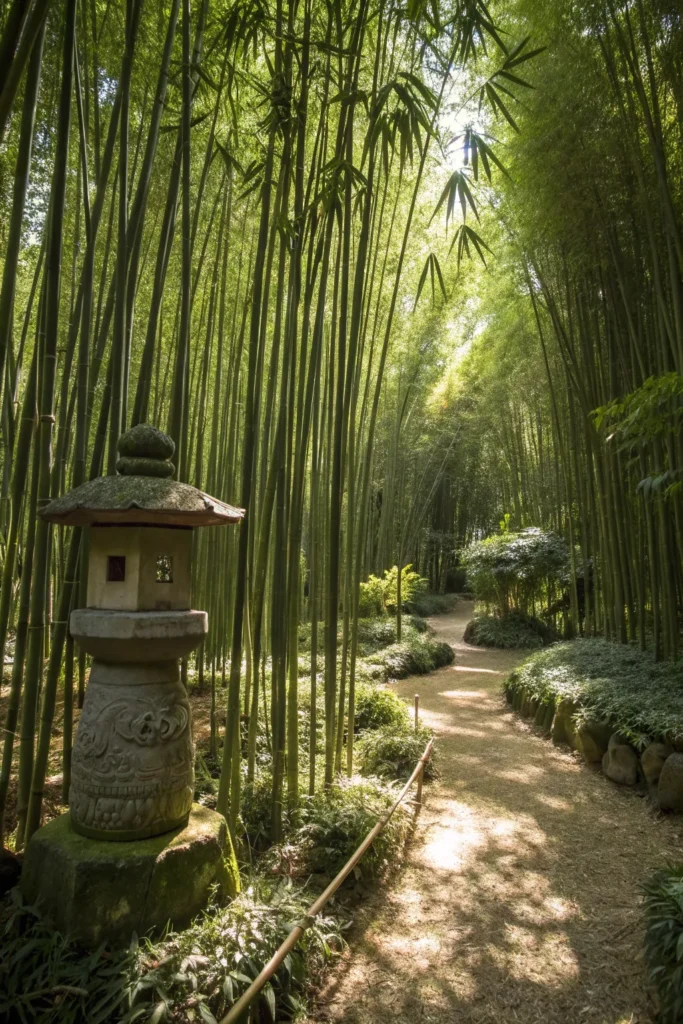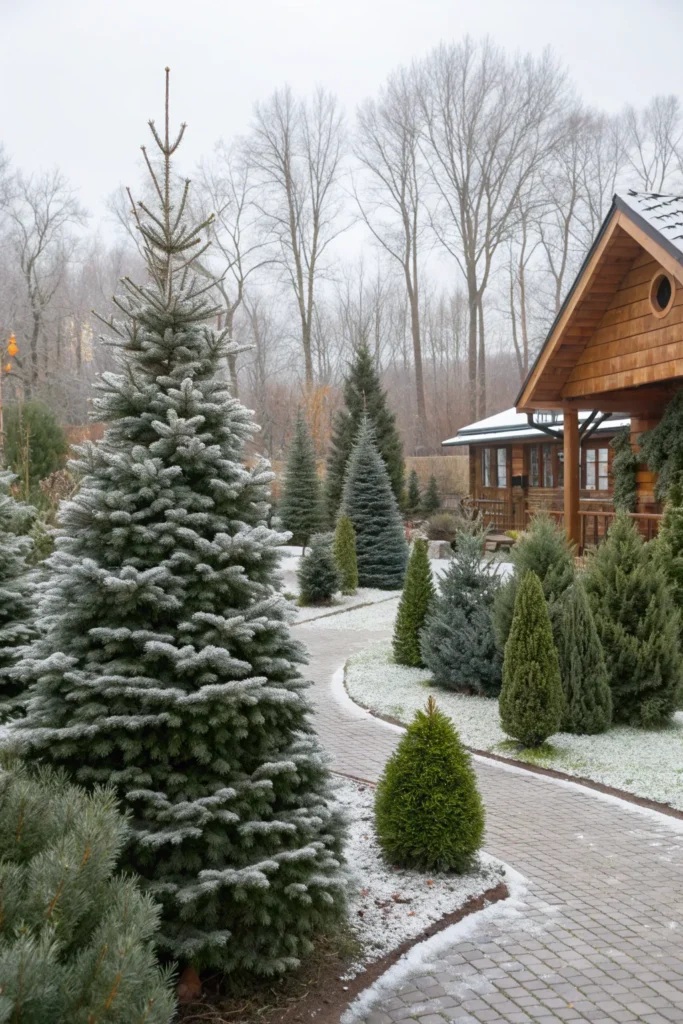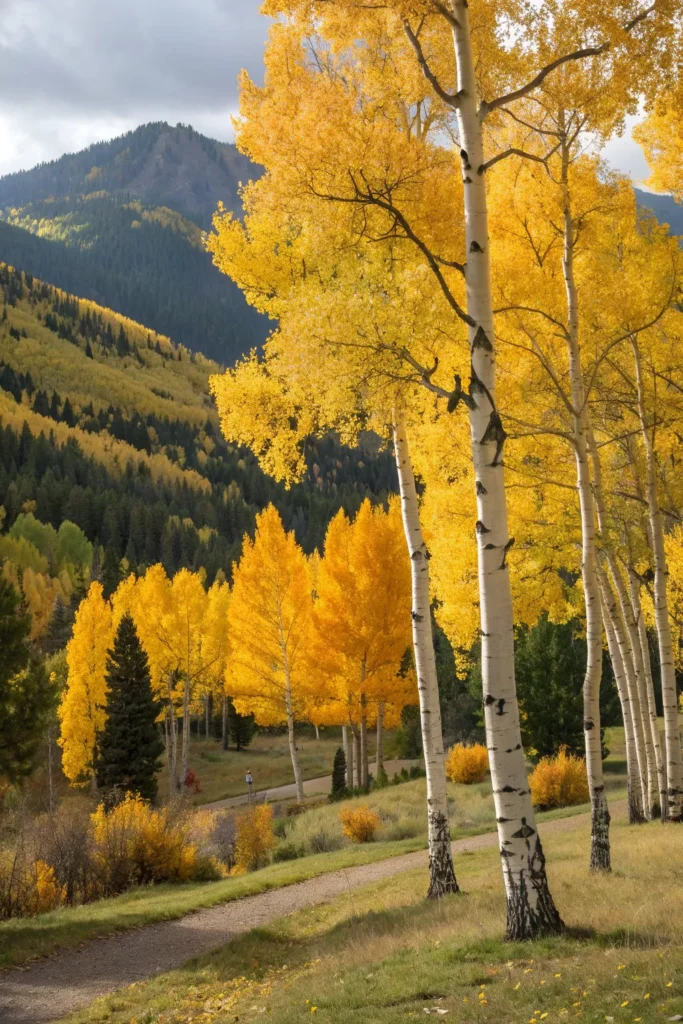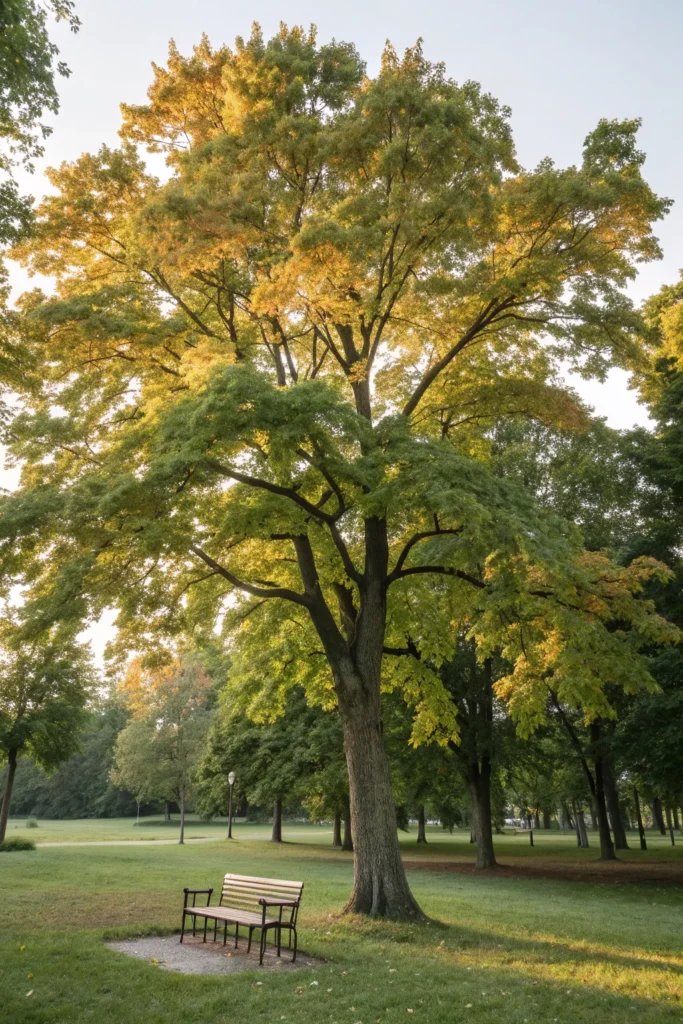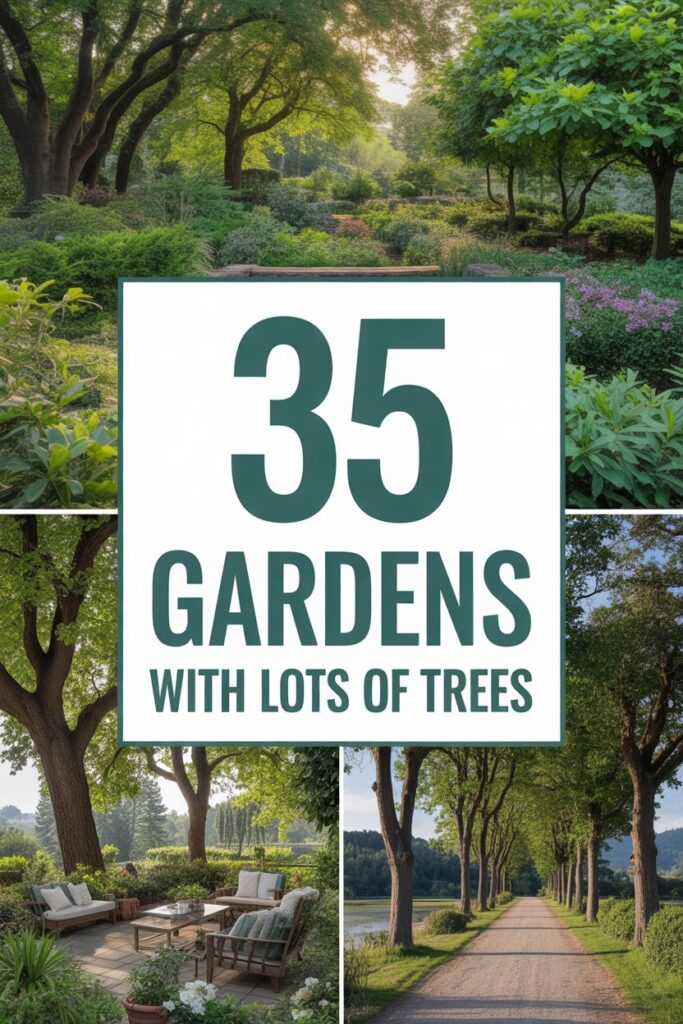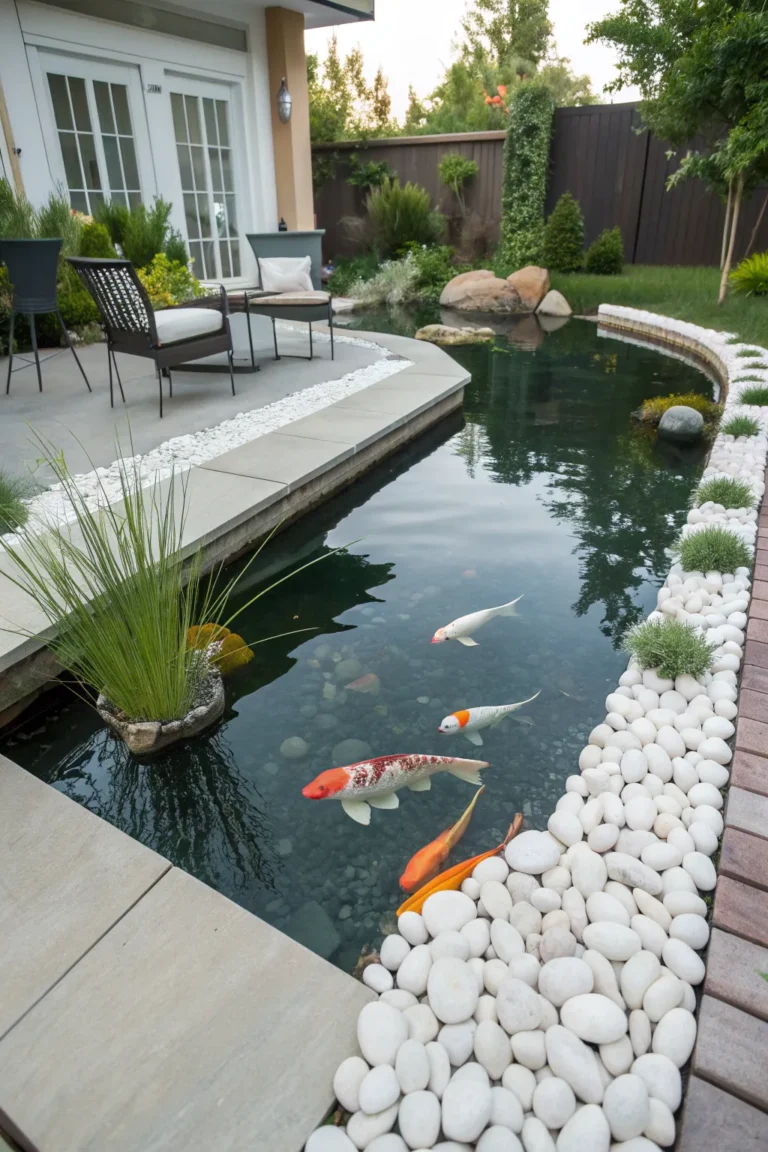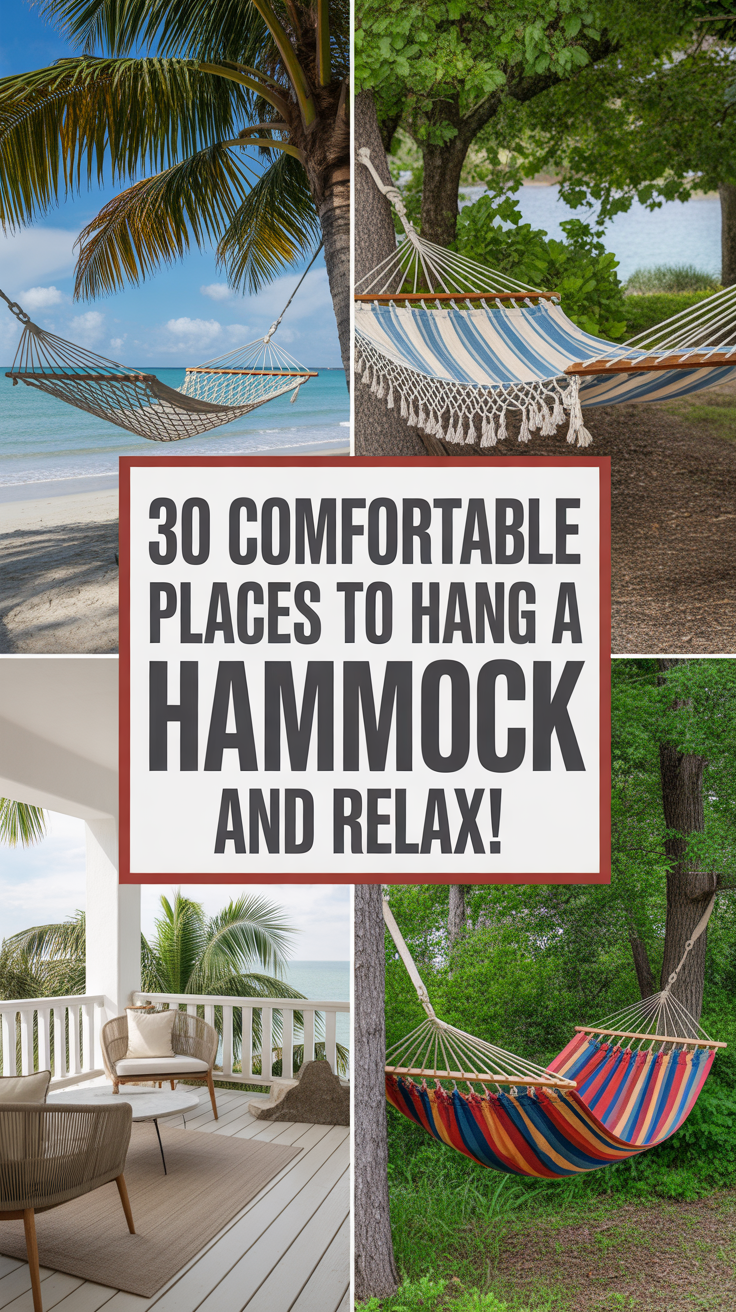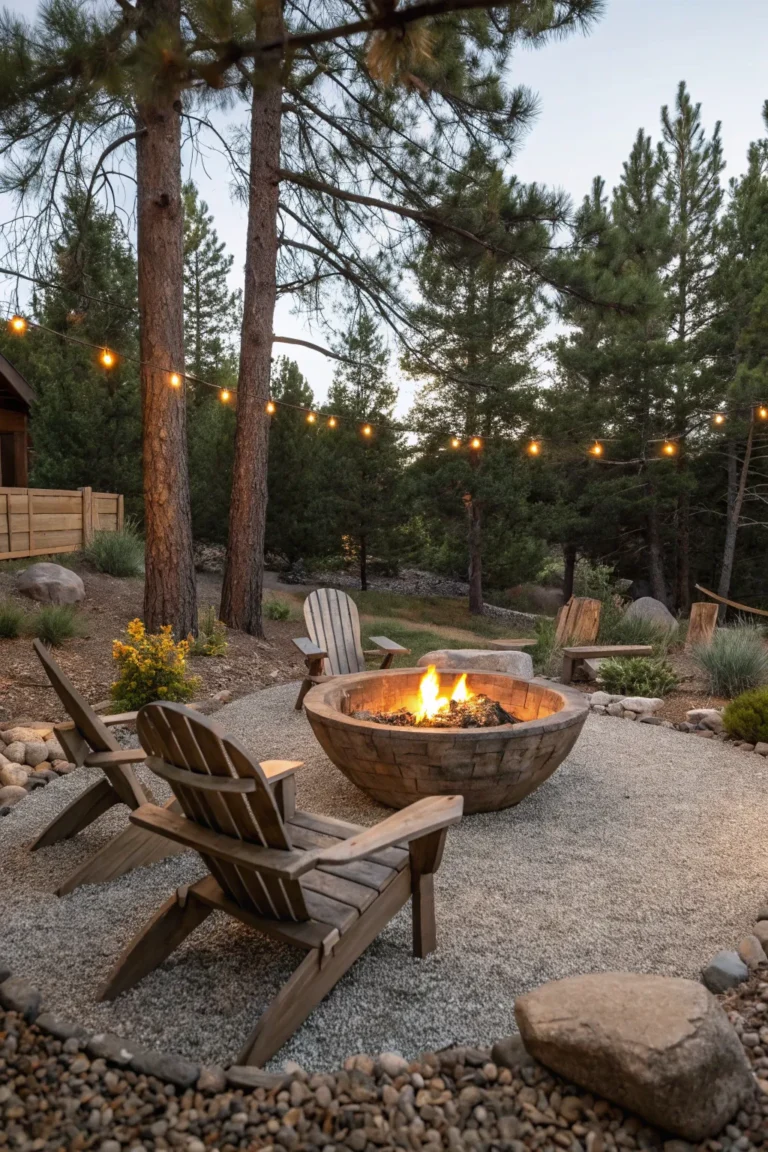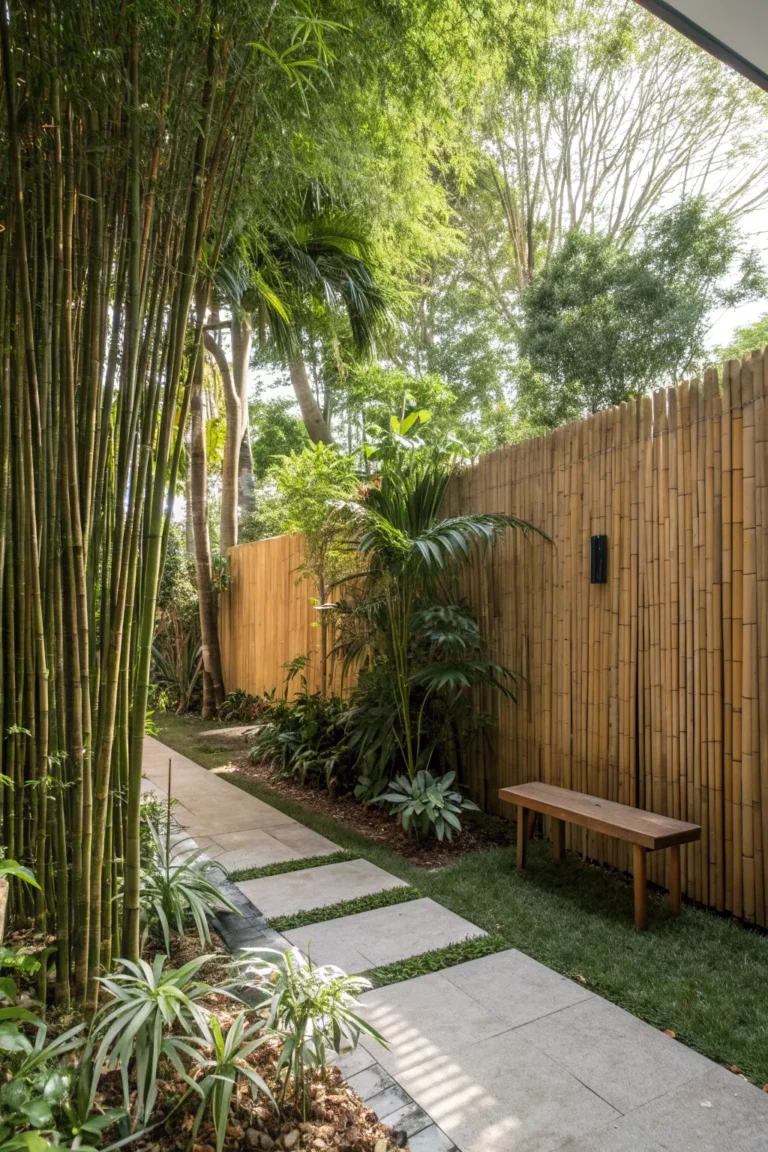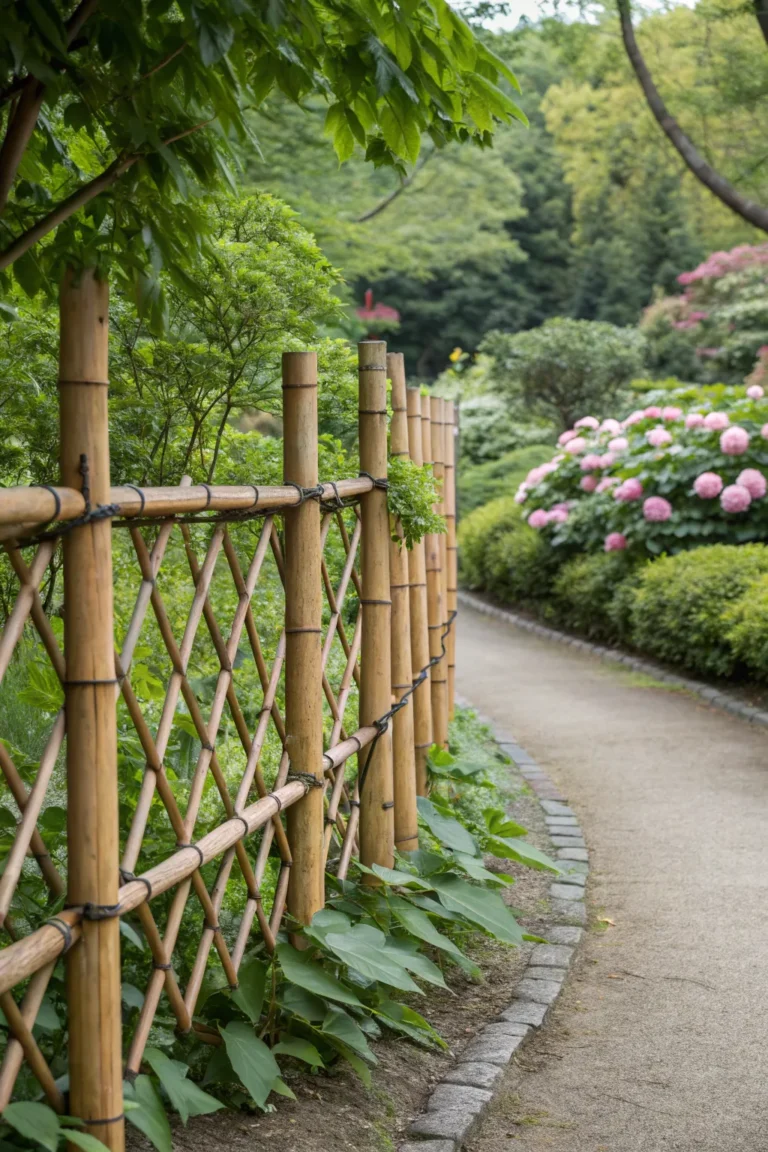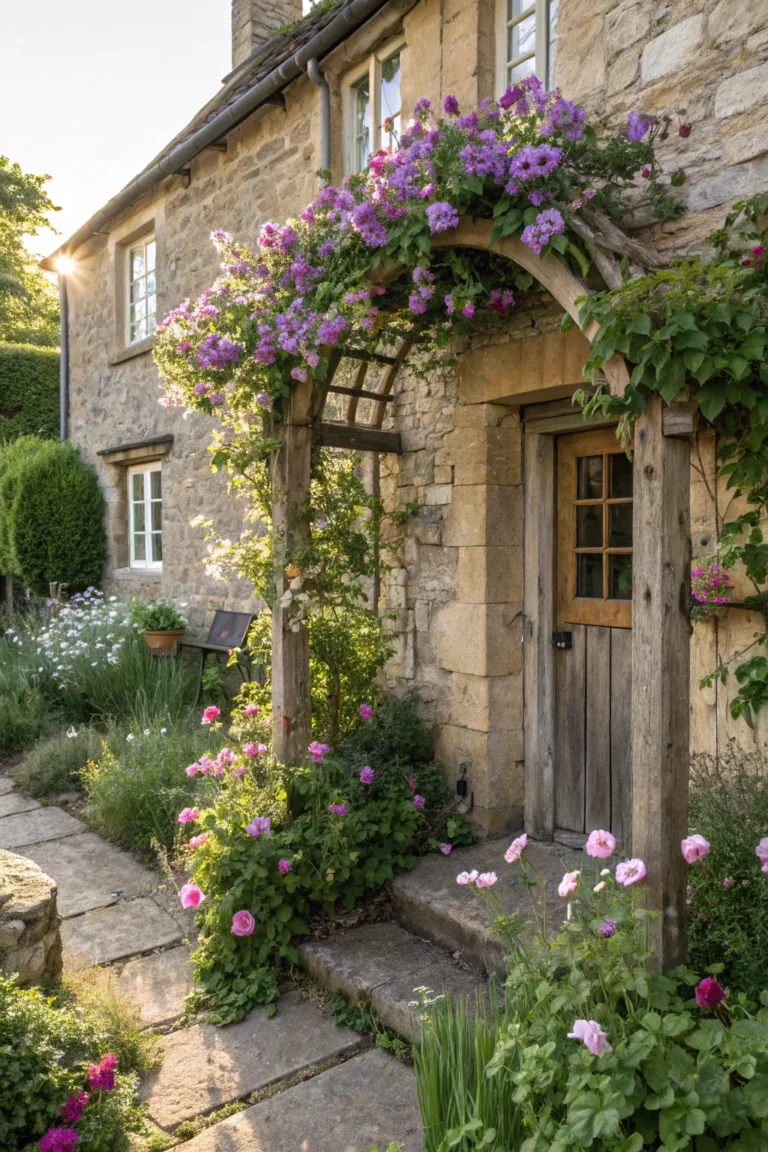30 Gardens With Lots Of Trees: Discover Nature’s Lush Sanctuaries
There’s something magical about walking through gardens with lots of trees—the cool shade, the rustle of leaves, and the sense of peace they bring. Trees aren’t just backdrops; they shape the entire mood of a garden.
From delicate flowering varieties to towering giants, trees provide structure, seasonal color, and a sanctuary for wildlife. They can turn a simple patch of land into a lush, living escape.
In this guide, you’ll discover 30 breathtaking gardens that celebrate the beauty of trees, offering inspiration for creating your own green haven at home.
In this article, we'll cover
- 35 Stunning Gardens With Lots Of Trees to Inspire Your Outdoor Oasis
- 1) Olive Tree
- 2) Magnolia
- 3) Spruce
- 4) Tree-Lined Garden Paths
- 5) Cedar
- 6) Palm Tree
- 7) Sycamore Tree
- 8) Eucalyptus
- 9) Cherry Blossom
- 10) Weeping Willow
- 11) Lemon Tree
- 12) Pine Tree
- 13) Sequoia
- 14) Mixed Tree Borders for Seasonal Interest
- 15) Oak Tree
- 16) Birch Tree
- 17) Redwood
- 18) Hickory
- 19) Dogwood
- 20) Creating Wildlife-Friendly Tree Gardens
- 21) Hemlock
- 22) Maple Tree
- 23) Cypress
- 24) Japanese Maple
- 25) Trees Paired With Water Features
- 26) Walnut Tree
- 27) Bamboo Grove
- 28) Fir Tree
- 29) Aspen
- 30) Ash Tree
- Conclusion
- FAQs
35 Stunning Gardens With Lots Of Trees to Inspire Your Outdoor Oasis
1) Olive Tree
Olive trees bring a timeless Mediterranean charm to any outdoor space. Their silvery-green leaves shimmer in sunlight, creating a soft contrast against brighter plants. These trees thrive in warm, dry climates, making them perfect for low-maintenance landscapes.
Beyond their beauty, they symbolize peace and longevity. Pairing olive trees with stone pathways or terracotta pots enhances their rustic elegance. They can also be grown in containers for smaller gardens, allowing flexibility in design.
For added appeal, combine them with colorful borders like August flowers to create a balanced and vibrant outdoor retreat.
2) Magnolia
Magnolia trees are known for their large, fragrant blossoms that herald the arrival of spring. Their bold flowers, ranging from creamy whites to deep pinks, create a striking focal point in any landscape.
These trees not only provide shade but also fill the air with a sweet fragrance that attracts pollinators. They work beautifully in spacious lawns or alongside garden seating areas, offering both comfort and elegance.
With their glossy leaves and graceful form, magnolias bring year-round interest, ensuring your garden remains captivating even when the flowers fade.
3) Spruce
Spruce trees add a touch of evergreen majesty with their pyramid shape and dense foliage. They’re excellent for privacy screening, windbreaks, or simply creating a lush backdrop in the garden.
Their deep green needles remain vibrant throughout the year, ensuring visual interest in every season. Spruces also provide shelter for birds and small wildlife, making them a valuable addition to nature-friendly spaces.
Planting them alongside wildflower gardens can boost biodiversity while softening their formal appearance. Whether standing alone or in clusters, spruces lend a timeless, woodland charm to outdoor spaces.
4) Tree-Lined Garden Paths
Lining a pathway with trees instantly transforms it into a scenic journey. Whether it’s a shaded walkway beneath oaks or a flowering avenue of cherry trees, the effect is both dramatic and calming.
Tree-lined paths create a sense of structure and guide visitors through your garden with elegance. They’re perfect for connecting spaces like entrance features or secluded nooks. Seasonal changes enhance their beauty, from spring blossoms to autumn foliage.
By choosing a mix of deciduous and evergreen varieties, you can ensure your garden path remains enchanting throughout the year.
5) Cedar
Cedar trees bring strength and resilience to outdoor landscapes. Their aromatic wood and evergreen needles make them highly valued for both aesthetics and function. Cedars are ideal for adding height and structure, whether as stand-alone specimens or grouped for a natural screen.
Their rich color pairs beautifully with stone, wood, or water features, enhancing the garden’s sensory appeal. Because of their longevity and resistance to pests, they’re a sustainable choice for gardeners seeking durability.
Adding a cedar near garden water features creates a calming, balanced atmosphere where scent, sound, and texture blend harmoniously.
6) Palm Tree
Palm trees instantly evoke a sense of relaxation and resort-style living. Their tall trunks and feathery fronds create striking silhouettes against the sky, adding drama to any landscape. Palms are highly versatile, thriving in both coastal and urban settings.
They’re also low maintenance, making them ideal for busy gardeners. Whether planted in rows or as stand-alone features, they transform ordinary yards into tropical escapes. Pair them with decorative stones or simple seating for a chic, modern vibe.
Palms work especially well around patios, where their shade creates cool gathering spots for summer afternoons.
7) Sycamore Tree
Sycamores are known for their impressive size and mottled bark that peels away to reveal cream and gray tones. Their broad, lobed leaves provide generous shade, making them perfect for large landscapes. These trees thrive near water sources and bring a stately presence to gardens.
They also support a wide range of wildlife, from nesting birds to insects. When combined with garden hammocks, sycamores create the ultimate spot for relaxation under their sprawling canopy.
Their autumn colors add another layer of beauty, ensuring year-round appeal in naturalistic or structured garden designs.
8) Eucalyptus
Eucalyptus trees are admired for their fragrant foliage and rapid growth. With silvery-blue leaves and striking vertical growth, they create a modern, airy atmosphere in outdoor spaces.
Their aromatic oils release a refreshing scent that enhances sensory appeal. Eucalyptus is particularly suited for warm climates and well-drained soils, where they thrive with little maintenance.
They can also be harvested for cut foliage in floral arrangements, adding functionality to their beauty. Their light canopy allows plenty of sunlight to filter through, making them excellent companions for lower-growing plants in layered landscapes.
9) Cherry Blossom
Cherry blossoms are celebrated worldwide for their breathtaking spring displays. These trees burst into clouds of pink or white flowers, creating an enchanting and romantic atmosphere.
Their fleeting bloom period makes them even more special, drawing visitors and pollinators alike. Ideal for ornamental planting, they shine in courtyards, borders, or as focal points along paths.
Pairing them with garden mirrors enhances the spectacle by reflecting their blossoms, doubling the visual impact. Even after the petals fall, their graceful structure and seasonal foliage keep them attractive throughout the year.
10) Weeping Willow
Few trees are as graceful as the weeping willow, with its cascading branches that sweep toward the ground. Often planted near water, they create tranquil, storybook-like settings perfect for quiet reflection.
Their shade provides cool relief during summer, while their movement in the wind adds dynamic texture to gardens. Willows also support biodiversity, offering nesting spots for birds and insects.
Although they require space to flourish, their dramatic presence makes them worth considering for larger landscapes. Positioned thoughtfully, they can become the centerpiece of a garden, offering beauty and calm in equal measure.
11) Lemon Tree
Lemon trees bring both beauty and function to outdoor spaces. Their glossy green leaves, fragrant white blossoms, and bright yellow fruits add year-round interest. These trees thrive in sunny spots and do well in pots, making them versatile for patios and small gardens.
Beyond their decorative value, they provide fresh fruit for cooking and drinks. A lemon tree instantly adds a Mediterranean feel, offering vibrancy and charm.
Whether you grow a single specimen or several in rows, they bring freshness, fragrance, and a cheerful pop of color to your landscape.
12) Pine Tree
Pine trees are evergreens that add texture, fragrance, and structure to a garden. Their needle-like foliage and tall, slender forms make them ideal for screening or creating natural borders.
Pines are also excellent for stabilizing soil, especially on slopes. They thrive in various climates and need minimal care once established. Combined with gardens featuring arches, pines can frame pathways beautifully, adding depth and symmetry.
Their cones also attract birds and wildlife, making them a practical as well as aesthetic choice. Pines provide a timeless woodland feel that works year-round.
13) Sequoia
Sequoias are the giants of the tree world, admired for their sheer size and longevity. These monumental trees can live for thousands of years, adding history and grandeur to any garden. While smaller varieties exist for residential landscapes, they still make a bold impact.
Sequoias are excellent for large properties where space allows them to thrive. Their thick, reddish bark and towering canopy provide drama and shade like no other.
Planting one is a long-term commitment, but the reward is a living legacy that can endure for generations.
14) Mixed Tree Borders for Seasonal Interest
Creating a border with mixed tree species ensures your garden shines year-round. By combining evergreens with flowering and deciduous varieties, you can enjoy continuous color and texture.
Spring blossoms, summer greenery, autumn foliage, and winter structure keep the landscape dynamic. Positioning trees alongside small garden courtyard designs creates layered interest in compact spaces.
This approach also attracts pollinators and wildlife, supporting a balanced ecosystem. Thoughtful placement and species selection allow you to create a border that’s both functional and breathtaking.
15) Oak Tree
The oak tree is a symbol of strength, longevity, and tradition. With its broad canopy and deeply lobed leaves, it provides ample shade and a commanding presence in the landscape. Oaks support more wildlife than almost any other tree, making them a vital part of biodiversity-friendly gardens.
They also display stunning autumn colors, ranging from gold to crimson. Because of their size, oaks are best for expansive gardens where they have space to grow.
Their timeless appeal makes them a beloved choice for both traditional and naturalistic landscapes.
16) Birch Tree
Birch trees are admired for their distinctive white bark and delicate, fluttering leaves. Their slender trunks bring lightness and elegance to any garden, making them a favorite for modern and natural designs alike.
Birches thrive in groups, where their pale bark creates a striking contrast against greenery. They also transition beautifully through the seasons—lush in summer, golden in autumn, and sculptural in winter. When planted near water or along pathways, they enhance both structure and charm.
Their graceful appearance makes them a versatile addition to landscapes of all sizes.
17) Redwood
Redwoods inspire awe with their immense height and resilience. These towering giants create natural cathedrals of greenery, offering unmatched shade and presence. While best suited for large spaces, smaller cultivars can be grown in residential gardens.
Their reddish bark and dense canopy make them visually striking throughout the year. Pairing redwoods with small backyard garden designs creates a dramatic backdrop, turning even modest landscapes into woodland-inspired retreats.
Beyond beauty, they also provide a habitat for countless species, making them a valuable part of an eco-conscious garden plan.
18) Hickory
Hickory trees are strong, durable, and long-lived, offering both shade and seasonal interest. Their leaves turn a brilliant golden yellow in autumn, making them a spectacular fall feature. Hickories also produce nuts that attract wildlife, from squirrels to birds, adding liveliness to outdoor spaces.
They’re ideal for larger properties due to their spreading canopy. The sturdy presence of hickories brings a traditional, countryside feel, perfect for rustic landscapes.
Whether standing alone or incorporated into groves, these trees combine beauty and function in a way that enhances any natural setting.
19) Dogwood
Dogwoods are beloved for their spring blossoms and striking seasonal transitions. Their flowers, ranging from white to pink, make them a favorite ornamental choice. In autumn, their foliage turns vivid shades of red and purple, adding a fresh layer of appeal.
Dogwoods thrive in partial shade, making them versatile for many garden layouts. When paired with garden borders made of sleepers, they create structured yet vibrant corners full of charm.
They’re also excellent for attracting pollinators, ensuring your garden remains lively and full of color throughout the year.
20) Creating Wildlife-Friendly Tree Gardens
Designing with wildlife in mind turns gardens into thriving ecosystems. By selecting trees that provide food, shelter, and nesting spaces, you can support birds, pollinators, and small mammals.
Fruit-bearing trees like crabapples or nut producers like walnut and hazelnut are excellent choices. Incorporating a mix of evergreens and flowering trees ensures year-round habitats. Adding understory shrubs further enriches biodiversity.
Beyond the ecological benefits, wildlife-friendly gardens create a sense of vibrancy and connection to nature, offering both beauty and purpose. This approach is perfect for gardeners looking to blend aesthetics with conservation.
21) Hemlock
Hemlock trees add elegance with their soft, feathery needles and graceful form. They’re often used to create natural screens or shady groves, thriving in cooler, moist climates.
Unlike their imposing cousins, hemlocks have a lighter, airier appearance, making them less overwhelming in smaller gardens. Their evergreen foliage provides year-round beauty, while their branches offer excellent shelter for birds.
Hemlocks also adapt well to slopes and woodland-inspired landscapes. When planted in groups, they form a lush backdrop, bringing both structure and serenity to outdoor spaces.
22) Maple Tree
Maple trees are celebrated for their spectacular fall colors, transforming landscapes into fiery displays of red, orange, and gold. Their broad, spreading canopies also provide abundant summer shade, making them versatile across seasons.
Maples thrive in various soil types, and different species allow for use in both large and small gardens. Beyond their beauty, they produce sap used for maple syrup, adding a functional element.
Whether standing alone as a focal point or planted in clusters, maples bring timeless charm and seasonal drama that never fails to impress.
23) Cypress
Cypress trees bring a distinct vertical presence to gardens, with their tall, slender forms that naturally draw the eye upward. They’re often used to frame entrances, line pathways, or add structure to Mediterranean-inspired designs.
These hardy evergreens withstand drought and poor soils, making them a practical yet striking choice. Their evergreen foliage stays fresh year-round, offering consistency even in winter.
With their architectural appeal, cypress trees bring elegance and balance, especially when paired with softer shrubs or flowering plants that enhance their strong, upright silhouettes.
24) Japanese Maple
Japanese maples are prized for their delicate foliage and elegant branching patterns. Their finely cut leaves change colors dramatically with the seasons, ranging from fresh greens in spring to brilliant reds and oranges in autumn.
Compact and slow-growing, they’re ideal for small gardens, courtyards, or as specimen trees in larger landscapes. Their refined beauty also makes them excellent for container planting. Japanese maples thrive in partially shaded areas, where their foliage glows with filtered light.
They’re the perfect choice for gardeners seeking artistic form and year-round interest.
25) Trees Paired With Water Features
Few combinations are as serene as trees reflected in water. Whether it’s a willow arching over a pond or pines mirrored in a courtyard fountain, the pairing adds depth and tranquility.
Trees provide shade that enhances the cooling effect of water, while the water amplifies the beauty of surrounding foliage. This design choice works well in both expansive landscapes and intimate gardens.
The interplay of sound, movement, and reflection creates a sensory-rich experience, turning ordinary outdoor spaces into meditative retreats that encourage relaxation and reflection.
26) Walnut Tree
Walnut trees are grand and productive, offering both shade and harvest. Their broad canopies create cool, inviting spaces during summer, while their nuts provide food for people and wildlife. Walnuts are long-lived and resilient, making them a lasting addition to any landscape.
They thrive best in spacious areas where their roots and branches can spread freely. In addition to their practical uses, walnuts add a stately charm to gardens, standing tall as symbols of strength and abundance.
Their seasonal foliage ensures beauty throughout the year.
27) Bamboo Grove
Bamboo groves bring a sense of movement and tranquility with their tall, swaying stalks and rustling leaves. Known for their fast growth, they can quickly form natural privacy screens or serene backdrops.
Bamboo adds a minimalist yet exotic feel, perfect for modern, Asian-inspired, or meditative garden settings. Its evergreen nature ensures year-round greenery, while its versatility allows use in both large landscapes and small corners.
Whether planted in clusters or as single accents, bamboo offers elegance and energy, transforming ordinary spaces into calming retreats.
28) Fir Tree
Fir trees are evergreens with a strong, pyramidal shape that adds symmetry and presence to gardens. Their needles are soft to the touch, and many species carry a pleasant fragrance. Firs work beautifully in formal gardens as living Christmas trees or as natural screens.
They thrive in cooler climates and bring color to landscapes even in winter. Beyond aesthetics, firs provide shelter for birds and small mammals, contributing to a lively, nature-rich garden.
Their timeless form and steady growth make them a dependable choice for long-term garden structure.
29) Aspen
Aspens are admired for their slender white trunks and leaves that quiver in the slightest breeze, creating a shimmering effect. Their golden autumn foliage is breathtaking, making them seasonal showstoppers. Aspens are also highly adaptable, thriving in various climates and soils.
They grow quickly and often form groves, bringing lightness and movement to open spaces. Their ability to spread makes them ideal for naturalistic landscapes.
With their unique visual appeal and dynamic presence, aspens add both beauty and character to outdoor settings, capturing attention in every season.
30) Ash Tree
Ash trees are known for their tall stature and graceful, feather-like leaves. Their broad canopies provide ample shade, making them practical additions to large gardens. Ash trees grow quickly and adapt well to different conditions, ensuring reliability in many landscapes.
Their seasonal transitions—from lush green in summer to golden tones in autumn—add variety and charm. They’re also valued for their strong wood, historically used in furniture and tools.
Standing proudly, ash trees symbolize strength and resilience, offering a blend of beauty and utility that enhances outdoor environments.
🌿 Small Garden Design with Trees – Landscaping Ideas
Learn how to use compact tree varieties like Japanese maples and olive trees to add shade, structure, and elegance even in small backyards.
Conclusion
From the delicate blossoms of Japanese maples to the towering grandeur of redwoods and sequoias, these gardens with lots of trees showcase how trees transform outdoor spaces into lush sanctuaries.
Whether you want year-round greenery, seasonal color, or wildlife-friendly design, there’s a tree to suit every style and purpose. By blending different species, you can create a layered, dynamic garden that evolves beautifully through the seasons.
Trees are more than just plants — they’re living sculptures, bringing serenity, strength, and timeless charm to any landscape.
FAQs
Discover more from Leafy Haven Home | Stylish Garden Ideas & Cozy Decor Tips
Subscribe to get the latest posts sent to your email.

